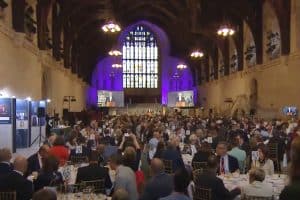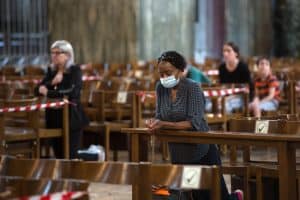By Jacquie Wain
If you were to make an emotional heat-map of any large city, the image over its hospitals would show deepest red. The most powerful hopes and fears of patients, staff and families concentrate in these places. Lives are changed. Feelings run high. In the heart of it all lies the chaplaincy, although it probably no longer has that name on the entrance.
Now two full-time members of chaplaincy staff at the department of pastoral and spiritual care at University Hospitals Plymouth NHS Trust have written Creating Space: Story, Reflection and Practice in Healthcare Chaplaincy, looking at what’s been going on in chaplaincy over recent years. They are discovering that their approaches, techniques and training programme can be applied in other settings. And they argue for greater recognition of chaplaincy as fully equal to parish-based ministry in the Church of England.
The authors are both Anglican priests and both have worked in healthcare, Sacha Pearce in nursing and Jan Collis psychology and psychotherapy. This book is no self-help quick read. Some chapters are more digestible than others. The use of anecdote, notably in the Living with a Virus chapter, makes an easier read than the more academic sections with their frequent referencing, (brackets) and “quote marks”.
Healthcare chaplaincy, as they write about it, nowadays extends far beyond ordained clergy comforting sick churchgoers and conducting bedside prayers, if ever it really was like that. As the authors put it: “We do not operate from a position where faith care is the first tool out of the toolbox.” In fact, they reject the idea of a toolbox all together. None of that means anyone who asks for religious support will be denied it.
The essence of the authors’ approach is probably captured best in the descriptions of the training and development programme for pastoral volunteers, who do not themselves have to be members or representatives of any religion.
Some will find this uncomfortable reading, and the authors acknowledge they have critics who claim the programme is founded on political correctness, is secular, and erases the religious content of earlier versions. Their response is that the chaplaincy should be able to cater for all in the same way as the rest of the hospital.
Fewer people now describe themselves as having a particular faith or religion and volunteers need to be equipped to support everyone, regardless. With this model, they say, department and volunteers offer support to the whole hospital family — staff, patients and the people they call wayfarers, the ones who drop by now and again.
Creating Space talks about three categories: pastoral care for people seeking space to tell their stories; spiritual for people trying to make sense of their situation, perhaps those with a feeling there is “something bigger” but who are not members of any religion; and religious, or faith, care for people who do observe formal religious practices and might want prayers said, or help with something like borrowing a Quran or having bedside communion. The first two, pastoral and spiritual, can apply to everyone with the third reserved for those who want it.
The authors name these interactions pastoral encounters, and in every case the fundamental approach is that the chaplain, volunteer or visitor enters into it with no expectations or agenda of their own. They listen with full attention as the person works things out for themselves and without advising, guiding or problem-solving. This makes the experience distinctive from just about everything else that will happen in a hospital.
The book also describes and commends reflective practice — simply but effectively translated as learning from experience — in which practitioners together look back on what happened and tease out learnings. This looking back is often the missing step for organisations and individuals as it is easily squeezed out amid the hurly-burly of getting stuff done. Yet failure to create space for reflection is a waste of resources and means valuable insights and discoveries are lost. It is far more than a rushed chat in the corridor and is approached carefully, with trust and respect. It is given thoughtful and detailed treatment.
The training course Creating Space: the Pastoral Encounter is now being adopted and adapted beyond hospital settings into places such as care homes. In 2021 it became part of ministerial and lay development offered in the Exeter Diocese, both online and in person. The challenge now is to enable and nurture “out there” the reflective practice element that the authors advocate so strongly.
At the same time, they see chaplaincy as an increasingly useful way for clergy to step beyond church and parish roles and create a fresh way of engaging with communities. That involves going where people are in their day-to-day lives rather than expecting them to step across the threshold of a church.
Creating Space: Story, Reflection and Practice in Healthcare Chaplaincy by Sacha Pearce and Jan Collis is published by Sacristy Press, £16.99
Jacquie Wain is a former BBC journalist and member of the Church of England, now training as a pastoral visitor
















